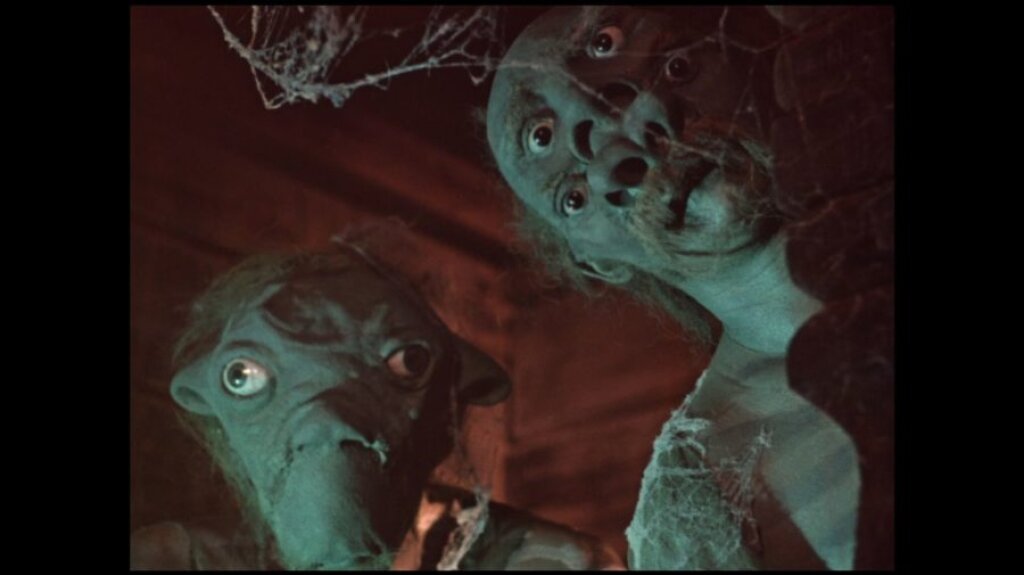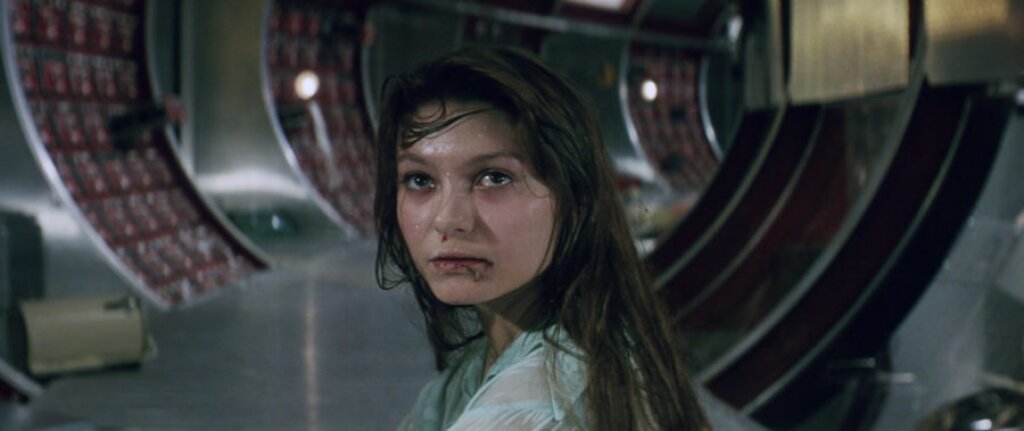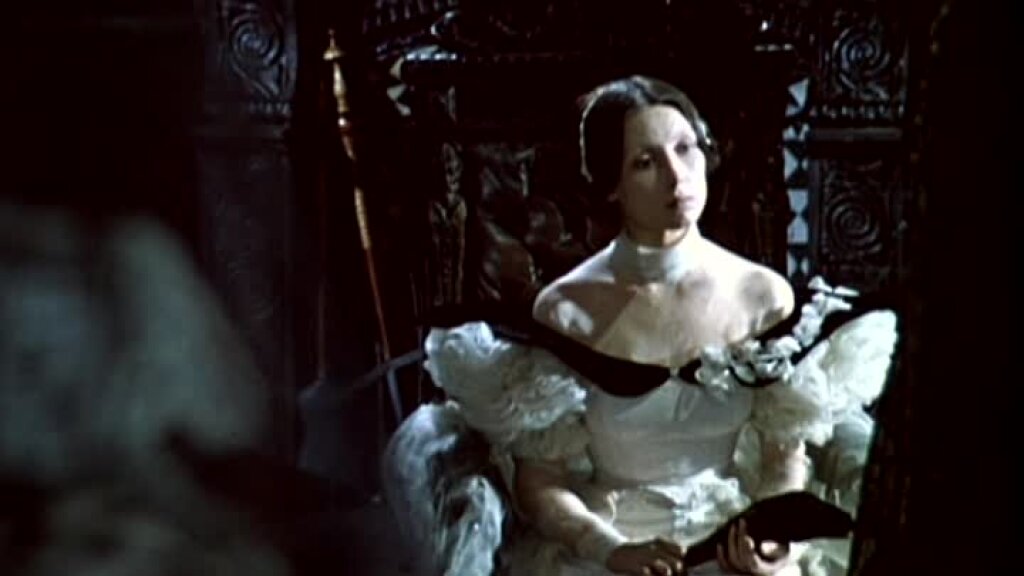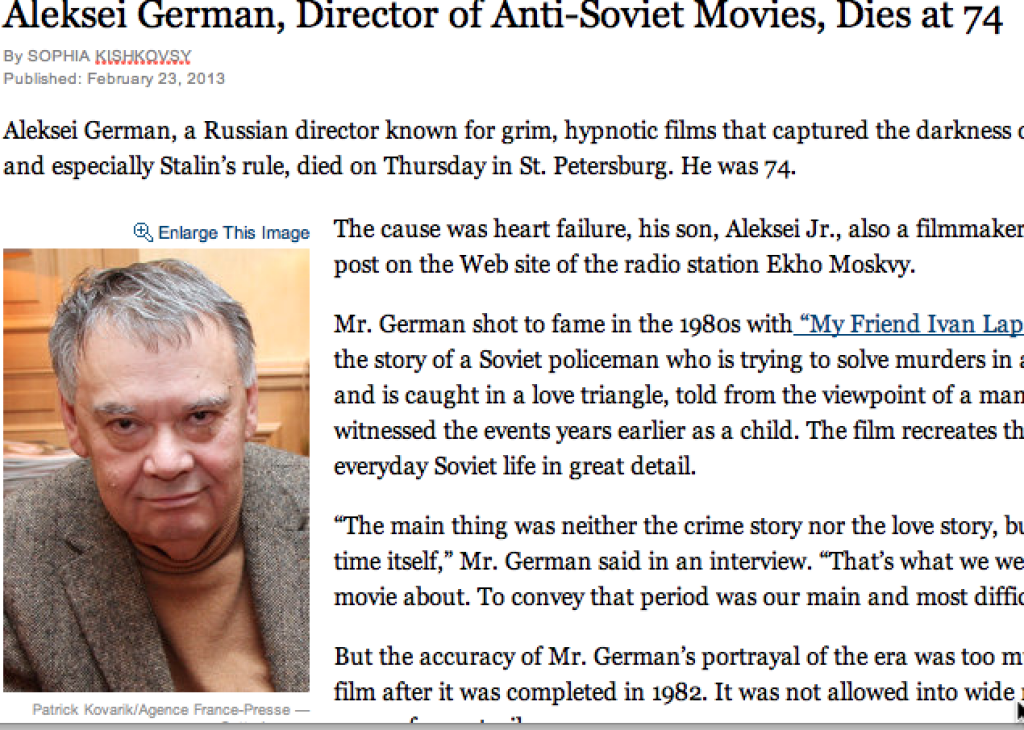Lev Nikulin is a Ph.D. Candidate in Slavic Literature at Princeton University. His dissertation examines Nikolai Gogol’s work as a horror writer. He also works on genre theory, science fiction, and the Gothic.
Fans of horror film curious about Russian-language contributions will find a USSR-sized gap in their research. Soviet horror films are rarely presented as an existing category, and write-ups on Russian horror film often skip straight to the post-Soviet period. Indeed, the genre had a hard time with the demands of Soviet cinema. However, as I hope to show here, rumors of its non-existence have been greatly exaggerated.
Horror film had little time to bloom in the early Soviet period. There was some carryover from pre-revolutionary auteurs such as Evgeny Bauer, creator of morbid gems like Dying Swan (1916), but prevailing artistic tendencies, and then official demands, soon clamped down on anything resembling horror, establishing a trend that would last several decades.
USSR cinema was called upon to express not only specific ideas, but also particular moods deemed ideologically appropriate for the Soviet viewer. The plucky optimism of comedies and the somber triumph of war movies had their utility for presenting a particular mindset to which the Soviet citizen could aspire; the indulgent despondency of horror did not.
The first important exception to the absence of horror is the well-known (and often claimed as the only) Soviet horror film, Viy, released in 1967 and ostensibly granted legitimacy via its respectable roots in Nikolai Gogol’s eponymous 1835 novella, as well as director Alexander Ptushko’s impressive resume of fairy tale films and animated features.
Looking more like a fairy tale than a monster movie and leaning more on Gogol’s comedy than his horror, Viy nevertheless features some creepy visuals of the undead, many-eyed, crawling, or tentacular, as well as a witch flying around in a coffin. Such overt horror imagery would not appear again for more than a decade.
The 1970s brought little favor to zombies and werewolves, but elements of fright did start to slither into some Soviet films, most noticeably in science fiction – horror’s sibling genre that had been steered away from macabre content by regime demands. Andrei Tarkovsky famously combined suspense and science fiction in his unnerving, meditative Stalker (1979), but his earlier Solaris (1972), a major SF epic, already features elements of horror.
When he arrives to the space station orbiting the planet Solaris, Tarkovsky’s protagonist Kris finds a Gothic castle in space. Secrets haunt its deserted halls, as do ghosts in the form of people from the crew’s past, reincarnated by the planet for inscrutable reasons. Like traditional ghosts, these copies bring up guilt and longing for the characters, driving one to suicide. When the reincarnation of Hari, Kris’ late wife who also committed suicide, learns she is a copy and makes another attempt at her life by drinking liquid oxygen, Solaris cruelly resurrects her once more. Her appearance as she is wrenched back to a torturous half-life, pale and shuddering, is undeniably vampiric.
By the late 1970s, experimentation with horror became more blatant. The 1979 film The Wild Hunt of King Stach, adapted from the eponymous 1964 novel by Belarusian writer Uladzimir Karatkevich, makes bold yet halting use of horror tropes, presenting Soviet viewers with supernatural phenomena which are undercut in a rationalizing finale.
The Wild Hunt features a crumbling mansion home to an aristocratic family in decline whose last representative, Nadezhda Yanovskaia (Nadeia in the novel), suffers from hypersensitivity and ghost sightings. She believes herself to be the last of a doomed line – a female, Slavic version of E.A. Poe’s Roderick Usher. Meanwhile, protagonist Andrei Belaretsky embodies the conflict between superstition and modernity. As a folklorist, he orients himself toward the past by studying old legends, but approaches them through reason, as puzzles to be solved.
Belaretsky is soon confronted by seemingly undeniable proof of the supernatural in the form of the mythical, ghostly riders of the Wild Hunt, and it seems for a time that ancient prophecy will put an end to the arrogance of modernity. But in the end reason prevails: the fearsome Hunt turns out to be a mere hoax designed by an ambitious local nobleman. The “Hound of the Baskervilles”-esque twist defuses the supernatural charge of the film, rendering it acceptable for 1979.
Such horror-softening tactics would not remain necessary for long, however. The 1980s finally witnessed a marked influx of horror films, often designated in Russian as “mystical” films (mistika), more rarely as “films of horror” (filmy uzhasov). Several mid-1980s films followed Tarkovsky’s lead in combining elements of horror and science fiction, such as Professor Dowell’s Testament (1984) and The Day of Wrath (1985), but the 1987 standout Mister Designer agreed with Wild Hunt in its choice of Gothic aesthetics.
Mister Designer is an arthouse vampire story about a designer on a blasphemous quest to outdo God’s creation. This Gothic story is set in pre-revolutionary St. Petersburg, its barebones plot interspersed with long montages of Symbolist art and an experimental soundtrack by Sergei Kuryokhin.
The action takes place between 1908 and 1914, on the eve of the collapse of one system, while the 1987 film itself predates the fall of another by a scant few years. The protagonist, a representative of a dying artistic order, suffers personal and artistic defeat and is eventually run over by a black automobile to the lamentation of an electronic aria. Presaging the state of cinematic chaos that would imminently arise in the 1990s, this film is as good a send-off as any to this last, shifting and dynamic period of Soviet cinema.
Soviet filmmaking was certainly hostile to horror’s moroseness and suspicious orientation towards an archaic past, but genres rarely stay out of sight for long, and horror arose again in the mid-to-late Soviet period through strategic and sometimes daring choices on the part of filmmakers. The 1990s would give rise to a tumultuous but exciting time for Russian-language horror – but this productive chaos had its roots in the efforts of preceding filmmakers. For those of us always on the lookout for some luxurious gloom, the Soviet period is not to be overlooked.






